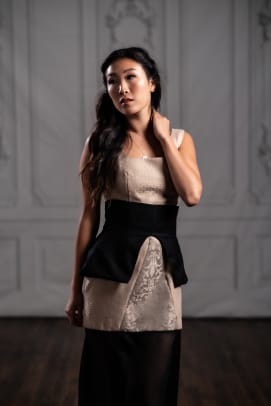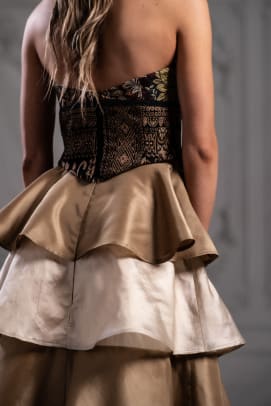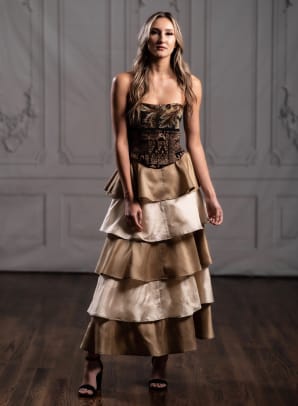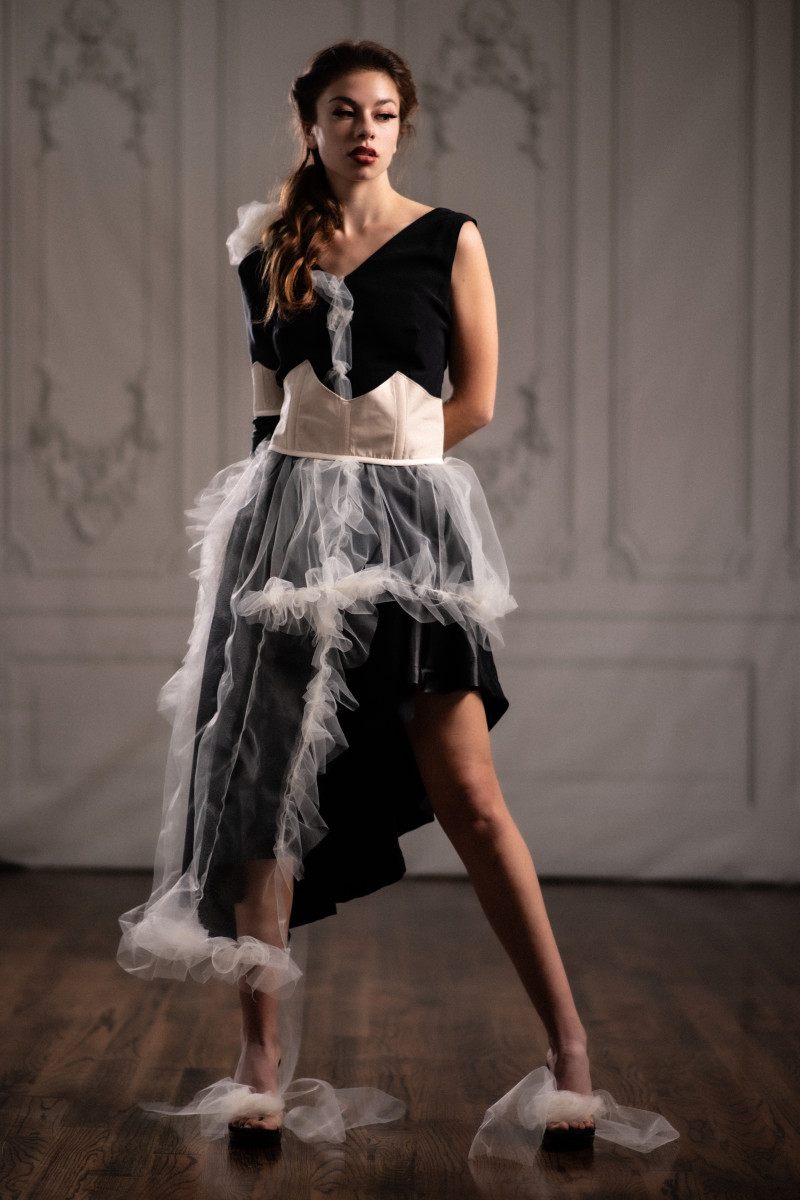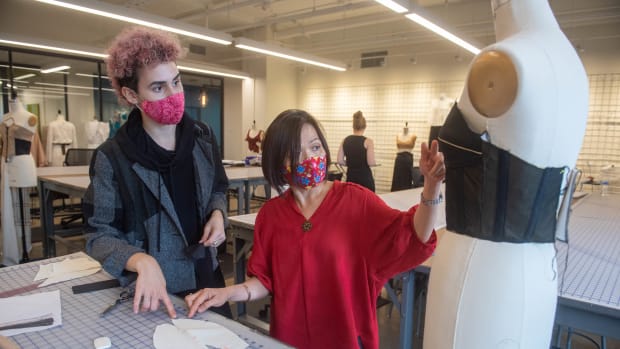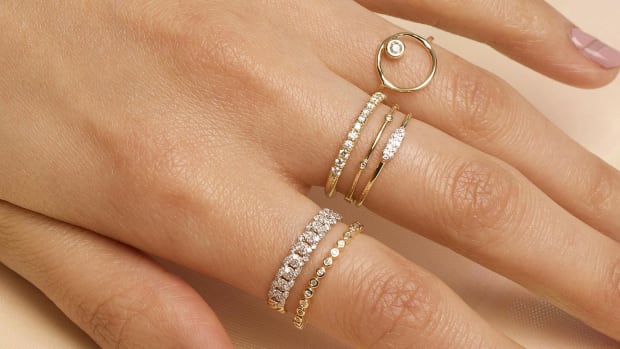I imagine the average person assumes fashion design school is something like a four-year-long season of "Project Runway." In reality, there's a lot more to it than high-stakes design challenges and
brutal critiques, but sometimes projects come along that fit into that TV depiction, brand sponsors and all.
At Belmont University's O'More College of Architecture and Design in Nashville, Tennessee, Fashion Design & Merchandising students are challenged with a minimum of one partnership project each year. For 2021, sophomore and junior design studios were tasked not only with designing and producing eveningwear looks inspired by the first Singer sewing machine invented 170 years ago, but they also had to use upcycled materials found in Goodwill thrift stores. Both Singer and Goodwill were sponsors for the project.
Jamie Atlas, the university's chair of Fashion Design & Merchandising, explains that Singer reached out with the idea to celebrate its 170th anniversary. The sewing-machine company is based in La Vergne, Tennessee, which is outside Nashville, and has a longstanding relationship with O'More. "During Covid, they actually donated 50 home sewing machines to our students," Atlas tells me. Goodwill is a frequent partner as well.
Participants in the four-week challenge, who, by spring, were mostly back on-campus were tasked with incorporating some elements of the machine released 170 years ago, from the lines to the colors: black and gold. Meanwhile, the upcycling element forced students to consider designing with sustainability in mind.
"We discuss sustainability in all of our classes," explains Atlas. "Especially with Gen-Z consumers, they want to support sustainability and ethical production is important to them, but they can't afford the higher-end, new product in the luxury brand market. So the way to do it is to go to the Goodwills and the thrift stores."
The eveningwear directive also made things more difficult, especially with the unconventional materials at play; many students used things like shower curtains, drapes and upholstery fabric. "They also included corsetry, piping and used advanced sewing techniques," Atlas says.
In the trite words of Tim Gunn, they made it work. The most common challenge from students was sourcing enough material and working with limited resources.
Recommended Articles
"It was difficult to source the large amounts of fabric necessary for an evening wear look from Goodwill, but I was able to use tablecloths and curtains to gain more yardage and execute my look," says Maddy Clements, who took inspiration from the sewing machine's structure as well as classic corsetry.
"Not finding enough yardage of specific fabrics resulted in some design modifications," explains Alisha Ascencio, who was inspired by Zimmerman's Spring 2021 collection. "I ended up incorporating alternative colors and adding seams in order to execute the design silhouette I had wanted. I believe this elevated the design in ways I hadn't anticipated."
Despite some initial complications, students came away from the project with new problem-solving skills and a better sense of how to reduce waste in their design processes.
"I believe the best designs come from figuring out a solution," says Marian Anderson, whose dress was inspired by the Vera Wang gown Zendaya wore to the 2019 Emmys. "As our natural resources are running out, it's crucial that I am able to create and construct garments from limited supplies, upcycled materials, and thrifted fabrics."
Sarah Toloo had to visit multiple Goodwill stores to find fabrics she could work with to create her New Look-inspired dress, but the difficulties were worth it in the end. "I am so happy I was able to do something like this because it made me more confident in my designing skills and the outcome was very rewarding," she says.
"I learned that I could marry my love for thrifting into my design education," adds Ascencio.
While students did get to present their final looks in class, they were once again unable to put on an on-campus fashion show due to Covid-19 restrictions. Instead, we're highlighting them here on Fashionista. A virtual showcase was designed, which you can see below, as well as a gallery of some of the final designs, with details on the surprising materials used to create them.
